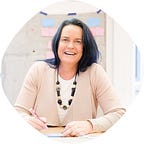Designers, we need to talk about Desirable, Viable, Feasible
Ideo’s Venn diagram is one of the founding pillars of design as we know it, and it’s had a huge influence on my career.
I’m not alone. Along with the double diamond, it’s at the forefront of every design thinking or human-centred design handbook. Junior designers get excited discovering it for the first time, and I’ve even had clients describe it to me as if I might not have heard of it.
It takes what we do as designers away from just “nice to have”, to being really practical. And it’s an easy sell for business — your product is going to be better because we look at not just what people want and need, but at what is technically feasible and economically viable for you. That’s talking their language. You can’t go wrong.
Except you can. For the last little while at Meld Studios, we’ve added in a fourth element — ethical. We wanted to ask ourselves “should we be doing this” at every stage in the process.
We think about this, and we ask our clients to think about this, at every stage of the journey.
This is better, but it’s still not enough.
In light of what’s happened recently with the global pandemic and the Black Lives Matter movement, we need to rethink the entire framing. Because things that have always been impossible — so not viable, or not feasible, or both — are overnight starting to happen. For example:
Could our entire organisation work from home?
- 2019 = We’d love to, but it’s just not practical.
- 2020 = Well yes, we all do, all the time.
Could we not have a police force?
- 2019 = It’s a far left wing fantasy.
- 2020 = We’re working towards a police-free Minneapolis.
What’s changed is not feasibility or viability. These things have always been technically possible, and could have been done in a way that didn’t send anyone broke. What’s changed is the appetite for them.
The rules about what’s possible are set by the people in power. Yes, that’s the people who are invested in the status quo. Who don’t want anything to change.
I can’t believe I ever thought that was a good thing to kow-tow to.
Basically what I’ve been doing my whole design career, is helping people and businesses make what they offer better, in a way that doesn’t put them out too much.
Now that’s not a bad thing in some ways — I have made things better for people. And that’s our mission at Meld, to improve the everyday lives of people as they interact with the world around them.
I’m also conscious that I earn a living by working for those people and businesses, so I can’t suddenly just start pushing the idealistic “right” thing to do, without caring what they have the technical ability for or whether they can afford it. I’d quickly stop getting work.
But I can’t ignore that my adherence to the DVF model has helped prop up the patriarchal, racist, capitalist society we are a part of.
That needs to change. We need a new frame that encourages us to push harder and question more. To bring more idealism into our pragmatism. To focus more on the outcome we’re aiming for, and to recognise the discriminatory nature of so many day-to-day things we surround ourselves with.
I don’t know what that looks like yet. But here’s some things I’m thinking about.
The Benefit / Effort matrix
Even if you don’t use this particular matrix, I expect you’re doing some kind of evaluation of how much benefit your concepts bring, versus how hard they will be to implement. This is where DVF hits the road — and there’s lots of ways we could make it better.
- How could we broaden the concept of “benefit” so it’s not just what’s defined by the project as valuable, but includes a perspective on bigger-picture impact?
- Rather than just jump to quick wins, how could we focus on everything in the top half, and use our energy to explore making the major projects less effort?
- Or, what could we use instead of this matrix?
Cynefin
I’m not quite sure that this fits in as a replacement to DVF, but Dave Snowden’s model is absolutely relevant to how we approach problem solving. A lot of design work is dealt with as if it’s complicated — maybe we need to be treating everything more like it’s complex.
As an aside, in a blog from 2006 (https://cognitive-edge.com/blog/culture-and-innovation/) he talks about the conditions for innovation that resonate strongly today:
- Starvation of familiar resource, forcing you to find new approaches, doing things in a different way;
- Pressure that forces you to engage in the problem;
- Perspective Shift to allow different patterns and ideas to be brought into play.
Reframing a project
This is straying even further from a replacement for the DVF model, but if you’re thinking about what we’re trying to achieve beyond just the goal of the project, it’s worth making those things front and centre from the start.
Now the project goal is usually defined before we come on board, but we can still influence how the project is run. One of the things we’re trying at Meld is to have this conversation in the very early days:
- How might we use our sphere of influence to improve quality of life for all people, and to regenerate our environment?
- How might we ensure diversity of thought and inclusion in this process?
The earlier we have these conversations, the easier it makes it to include those factors when we come to prioritising concepts or next steps.
Where to next?
These are just a starting point. I’m open to suggestions, and I’m keen to try out some new ways of doing what we do.
